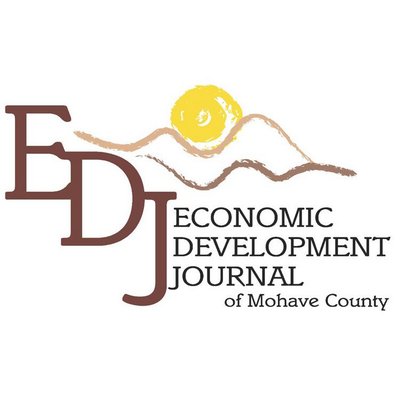ARIZONA — As Arizona transitions into 2024, its small business landscape reflects a dynamic yet challenging economic environment. The state, celebrated for its robust economic performance in recent years, including a significant leap to the 3rd rank in economic outlook nationally, faces a complex blend of opportunities and headwinds. The entrepreneurial spirit in Arizona, particularly in Phoenix, resonates with energy, driven by technological innovations and a resilient workforce. However, looming global economic downturns, evolving technological and societal trends, and a shift towards sustainable business practices present a multifaceted scenario for small businesses.
A key factor shaping Arizona’s small business economy is the increasing digitization and automation of business operations. Small to medium-sized enterprises are expected to further embrace modern technologies such as cloud computing, artificial intelligence, and even augmented reality in various sectors. This digital transformation aims at enhancing customer experiences and optimizing internal operations, presenting business owners with the challenge of continuously analyzing and upgrading their technological capabilities.
The state’s job market, while still robust, shows signs of moderation. Arizona’s economy, after flourishing in 2022, anticipates a relative weakening in the first half of 2024. This forecast aligns with predictions of job growth deceleration, partly due to previous interest rate increases affecting national gains. The job market’s evolution largely pivots around sectors like health care, hospitality, professional technical services, manufacturing, and wholesale trade, which collectively account for a significant portion of new jobs. Yet, Arizona’s unemployment rate has seen a modest uptick, reflecting a slight softening in the labor market.
This economic slowdown is expected to influence small businesses directly. With consumer spending expected to decline in response to slowing job growth and increased interest rates, businesses must adapt to changing market dynamics. The emphasis for small businesses will likely shift towards fostering unique customer experiences and personalization. Moreover, the trend towards sustainability is increasingly prominent, with consumer preferences leaning heavily toward environmentally responsible businesses. This shift necessitates a strategic reevaluation for businesses in their operations and offerings.
Remote and hybrid work models, a legacy of the pandemic, will continue to influence the small business sector in Arizona. These work arrangements have become integral to the job market, with a significant portion of employees working remotely at least part-time. Employers are recognizing the benefits of remote work, including lower overhead costs and improved productivity, while employees increasingly view remote work options as a critical factor in their job choices. This trend underscores the need for small businesses to adapt their operational and workforce management strategies to align with these evolving work patterns.
Amidst these shifts, a notable emphasis on soft skills is emerging as a critical business trend. As automation and AI become more prevalent, the nuanced human qualities such as emotional intelligence, communication, and strategic problem-solving are gaining value. Phoenix’s businesses are therefore encouraged to invest in nurturing these soft skills, complementing technological advancements with a human perspective. This could involve targeted training programs, promoting cross-departmental collaboration, and encouraging mentorship and leadership development, all aimed at creating a workforce that’s both technologically savvy and emotionally intelligent.
The housing market, a crucial aspect of the economic landscape, is experiencing significant changes. Affordability has become a pressing issue, with only a fraction of Arizona’s population able to afford median-priced homes. This reality is pushing people to seek housing further from employment centers, impacting life affordability overall. Additionally, Arizona has faced challenges in adding new housing inventory to the market, a result of under building over the past decade and various economic factors affecting construction. These housing market dynamics are expected to have a direct impact on small businesses, particularly those in the construction, real estate, and related sectors.
Furthermore, the industrial and office space sectors in Arizona present contrasting scenarios. The industrial market, particularly in warehouse and distribution, has seen significant growth and demand, largely due to Arizona’s robust employment market driving population growth. Conversely, the office space market faces high vacancy rates, attributed to the increasing preference for remote work. Only a small fraction of the workforce prefers full-time office work, reflecting a substantial shift in workplace dynamics. This divergence in industrial and office space trends offers different challenges and opportunities for small businesses operating in these domains.
Retail in Arizona has also undergone significant transformation. Over the past decade, the retail sector has performed well, absorbing more than was being built. This has led to falling vacancy rates and rising rents. The pandemic caused a substantial shift in the retail landscape, removing some spaces from the market and altering consumer behaviors. As Arizona continues to experience population growth, the demand for essential retail services like groceries and personal care is expected to rise, providing opportunities for small businesses in the retail sector.
In the broader economic context, Arizona faces challenges related to water supply and sustainability. The areas experiencing the most growth, such as the West Valley and Pinal County, are also those with significant concerns over water supply. This situation is likely to influence development patterns and could impact the underwriting practices of capital markets. The intertwining of growth patterns and water issues presents a unique challenge for Arizona, potentially affecting various sectors, including agriculture, real estate, and industrial development.
Addressing the financial aspects, the economic forecasts for Arizona reveal a mixed picture. While the state continues to generate solid job, income, and sales gains, there are indications of a slowdown. The baseline outlook for 2024 suggests a decline in job growth as past interest rate increases impact national gains. Moreover, population growth is expected to normalize after a pandemic-driven surge. For small businesses, this implies a need for strategic financial planning and possibly, a more cautious approach to expansion and investment.
The labor market’s fluctuations also reflect broader economic trends. In October, Arizona witnessed its first monthly job decline in October since July, with sectors like professional and business services, financial activities, and leisure and hospitality experiencing significant drops. However, private education, health services, trade, transportation, and utilities showed gains. This complex job market landscape will likely influence small business strategies, particularly in sectors directly affected by these employment shifts.
Inflation and housing affordability are additional critical factors. Inflation in Phoenix, although decelerating, remains high compared to pre-pandemic levels. Housing affordability continues to deteriorate, with a significant percentage of homes becoming less accessible to median-income families. This scenario presents challenges for small businesses, particularly those in sectors linked to consumer spending and real estate. Businesses may need to adjust their strategies to navigate an environment of high living costs and changing consumer priorities.
Consumer price inflation’s deceleration in Phoenix is a positive sign, but prices remain significantly higher than in previous years. This persistent high cost of living could affect consumer spending habits, with potential implications for small businesses reliant on discretionary spending. Firms may need to adapt their pricing strategies or explore cost-efficient operational models to maintain competitiveness in this environment.
Lastly, the forecast for job and population growth in Arizona, while still positive, indicates a slowing momentum. This slower growth trajectory may impact small businesses, particularly those dependent on local market expansion and consumer spending. Strategic planning, market analysis, and agility in adapting to changing economic conditions will be key for small businesses aiming to succeed in this evolving economic landscape.
In response to these economic trends, small businesses in Arizona are adapting to maintain competitiveness and growth. The rise of remote and hybrid work models, while offering operational efficiencies, also demands a rethinking of business practices and workforce management. This trend, alongside the emphasis on sustainability, is pushing businesses to innovate in their product offerings and operational processes. These adaptations are not just about survival but also about seizing new opportunities in a changing market.
Another factor impacting small businesses is the evolving consumer behavior, especially in the context of the pandemic and economic changes. Businesses are finding it necessary to enhance their digital presence and leverage online platforms more effectively. This digital pivot is not just about reaching customers through e-commerce but also about utilizing digital tools for better customer engagement and service delivery. The integration of AI and other advanced technologies in business operations is becoming increasingly important in this digital transformation journey.
As small businesses navigate these challenges, networking and collaboration emerge as vital strategies. Building relationships with other local businesses, participating in community events, and engaging with local chambers of commerce can provide valuable support and resources. These connections can lead to new opportunities, shared knowledge, and a stronger presence in the local market.
Collaborations can also extend to partnerships with educational institutions, tapping into local talent pools and fostering a skilled workforce aligned with the needs of small businesses.
The financial landscape for small businesses is also changing. With the potential for economic slowdowns, small businesses must manage their finances prudently, balancing the need for investment in growth with the necessity of maintaining financial stability. Access to funding remains a critical issue, with businesses needing to explore various financing options, including traditional loans, grants, and alternative funding sources. Financial planning and management are becoming increasingly important for small businesses to navigate the uncertainties of the market.
Finally, regulatory and policy changes at the state and local levels can significantly impact small businesses. Staying informed about these changes and understanding their implications is crucial. This might involve compliance with new regulations, adapting to tax changes, or leveraging benefits from new policies. Active engagement with policymakers and participation in policy discussions can also provide small businesses with a voice in shaping the business environment in Arizona.
In summary, Arizona’s small businesses are at a crossroads where adaptation, innovation, and resilience are key to navigating the challenges and opportunities of 2024. By embracing these strategies, small businesses can position themselves for success in a rapidly evolving economic landscape.
—Jeremy Webb
Two Hospitals United for our Tri-State Neighbors
As the leaders of Valley View Medical Center and Havasu Regional Medical Center, we were thrilled that our dedicated and hardworking staff gathered together in early December as part of a Market Leadership Development Conference. Our leadership and staff shared ways...





























